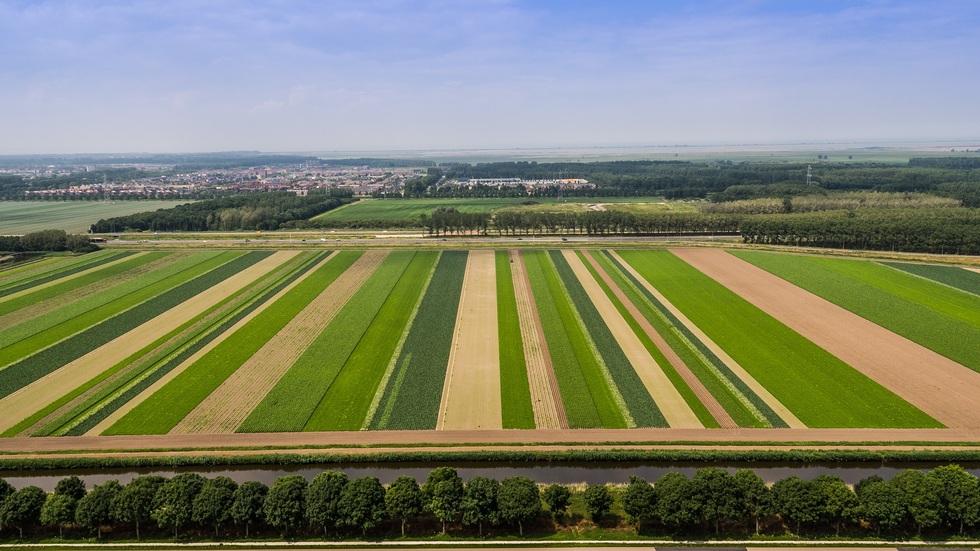From pv magazine Global
A consortium formed by Swedish energy company Vattenfall, the Netherlands Organisation for Applied Scientific Research (TNO), Dutch real estate agency Rijksvastgoedbedrijf (RVB), the Aeres University of Applied Sciences, Dutch organisation Zon in Landschap, and the ERF, the largest private organic farm in the Netherlands, is investigating how to combine PV power generation with strip farming.
Strip cropping consists of cultivating narrow, developed, and undeveloped field strips with the aim of reducing erosion by water and wind. This method is particularly widespread in the regions where soil and wind erosion lead to the erosion of the fertile soil surface. It is also used when the slope is too steep, runs too long or other cultivation methods cannot prevent soil erosion or wind erosion.
The research project will include a 0.7 MW pilot agrivoltaic plant near Almere, in the Netherlands’ northern province of Flevoland. “We will test the system and the business models,” Vattenfall’s head of Solar Development NL, Annemarie Schouten, told pv magazine. “We want to investigate the possibilities to increase the rollout of such systems. These technologies are combined with lane farming, a biodiverse and ecological way of farming, where no pesticides have to be used.”
The demonstrator solar plant, called Symbizon, will be built with single-axis trackers and bifacial modules placed at a height of 2.3 m. “We will use a smart tracking algorithm to search for the optimal point for both the crop growth and energy production,” Schouten stated. “Moreover, the turning modules ensure a non-static shading which is expected to be better for the crops.” Strip farming with various crops will be alternated with strips with solar panels, which will make the site accessible for agricultural machines.
In the solar strips, the consortium wants to cultivate herbs, as these normally need less light. “For the pilot in Almere we will use two different row distances of 13 and 7 m, respectively,” Schouten further explained. This safety distance is used for multiple reasons and most importantly to avoid water runoff in the herb strip, she added, pointing out that extensive water runoff from the modules can harm the crops. Next to the pilot plant, the research team has planned a reference field where no PV modules will be installed.
Other crops, such as potatoes, beans, beetroot, broccoli and grains, may be included in the pilot. “We will have to take into account the height of the crops and assess what the influence of shade on the crop growth will be,” Shouten added, noting that there is always a competition for light in these systems, as light is needed for both the plant photosynthesis and energy production. “The biggest challenge here is to assess what the optimal position of the panels will be in each stage of the growth process of the crops, without compromising the electricity yield,” she added.
The research project has a four-year duration and the agrivoltaic facility is planned to come online in the spring of 2022.
In August, the Netherlands Organisation for Applied Scientific Research (TNO) presented a new approach for building east-west oriented solar parks, which it claimed can prevent soil deterioration and offer the same yield as south-oriented PV plants.
A month later, a group of scientists at Utrecht University in the Netherlands assessed the effects of south-oriented, large scale PV plants on vegetation, soil, and microclimate in 13 solar parks in the Netherlands and found that a distance between panel rows of at least 1.5 times panel height is crucial to create the best environmental conditions.
This content is protected by copyright and may not be reused. If you want to cooperate with us and would like to reuse some of our content, please contact: editors@pv-magazine.com.









By submitting this form you agree to pv magazine using your data for the purposes of publishing your comment.
Your personal data will only be disclosed or otherwise transmitted to third parties for the purposes of spam filtering or if this is necessary for technical maintenance of the website. Any other transfer to third parties will not take place unless this is justified on the basis of applicable data protection regulations or if pv magazine is legally obliged to do so.
You may revoke this consent at any time with effect for the future, in which case your personal data will be deleted immediately. Otherwise, your data will be deleted if pv magazine has processed your request or the purpose of data storage is fulfilled.
Further information on data privacy can be found in our Data Protection Policy.